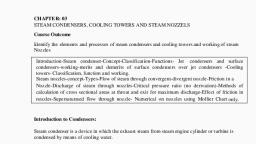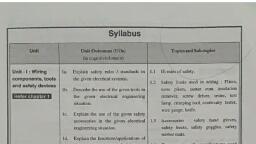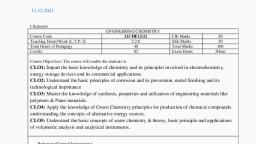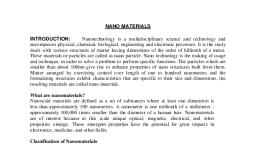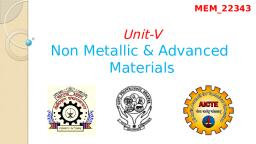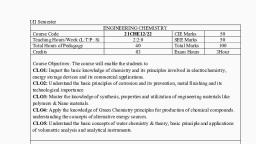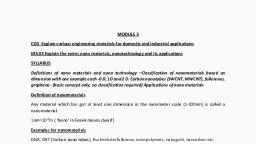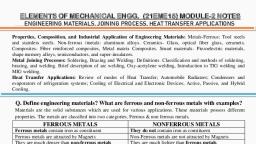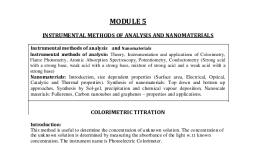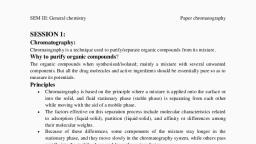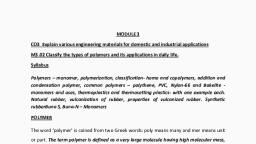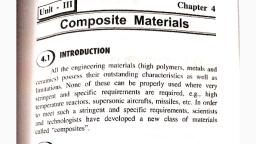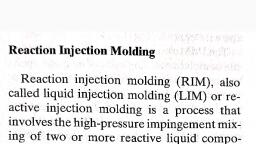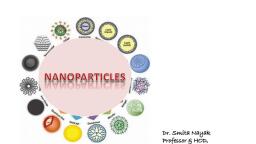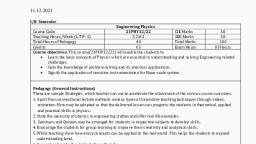Page 1 :
4th chapter - Non Metallic and Advanced Materials, 1. Define metals and non-metals, Metals are polycrystalline bodies which are having number of differentially oriented, fine crystals. Normally major metals are in solid states at normal temperature, Examples of metals: Silver, Copper, Gold, Aluminum, Iron, Zinc, Lead, Tin etc., Non-Metal materials are non-crystalline in nature. These exist in amorphic or, mesomorphic forms. These are available in both solid and gaseous forms at normal, temperature., Examples: Plastics, Rubber, Leathers, Asbestos etc., 2. Difference between Metals and Non Metals, SI. No., , Property, , 1, , Structure, , 2, , State, , 3, , Valance electrons, and conductivity, , 4, , Density, , High density, , Low density, , 5, , Strength, , High strength, , Low strength, , 6, , Hardness, , Generally hard, , Hardness is generally varies., , Malleable, , Non malleable, , Ductile, , Non ductile, , Generally non brittle in, nature, Metals possess metallic, luster, , Brittleness varies material to, material, Generally do not possess metallic, luster (except graphite & iodine ), , 7, 8, 9, 10, , Malleability, Ductility, Brittleness, Luster, , Metals, , Non-Metals, , All metals are having, crystalline structure, , All Non-metals are having amorphic, & mesomorphic structure, State varies material to material to, Genera metals are solid, material. some are gas state at, normal temperature., normal temperature., Valance electrons are free to Valance electrons are tightly bound, move within metals which, with nucleus which is not free to, makes them good conductor move. This makes them bad, of heat & electricity., conductor of heat & electricity.
Page 2 :
3. Define Polymer and list its types, Polymer is a term composed of two words i.e. poly which means many and mer which, means unit. Thus polymer is a bigger molecule made up of various smaller molecules,, therefore polymers are also known as macromolecules, which are build up by linking, together of a large number of small molecules, called monomers. The process of, formation of polymers by joining the structural units is known as polymerization, some, examples of polymers or macromolecules are polyethene, DNA, protein, Nylon, etc., , Types of polymers, a) On the basis of the type of the backbone chain, polymers can be divided into:, , , Organic Polymers: Organic polymers are materials that essentially contain carbon, atoms in the backbone, , , , Inorganic Polymers: Inorganic polymers are polymers with a skeletal structure that, does not include carbon atoms in their backbone., , b) On the basis of their synthesis, , , Natural Polymers: Natural polymers occur in nature and can be extracted. They are, often water-based. Examples of naturally occurring polymers are silk, wool, DNA,, cellulose and proteins., , , , Synthetic Polymers: Synthetic polymers are derived from petroleum oil, and made by, scientists and engineers. Examples of synthetic polymers include nylon, polyethylene,, polyester, Teflon, and epoxy., , 4. Give the classification of polymers
Page 3 :
5. List any 6 characteristics of polymers, , , , , , , , , , , , Low specific gravity and high specific strength, Thermal and electrical insulations, Corrosion and weather resistances, Ease in design and manufacturing of complicated structures, Outstanding aesthetic appeal due to ease in adoption of permanent colours, Mass production with low energy intensive manufacturing techniques, Ease in printability and adhesion, Ease in handling and cleanliness, Offering tremendous scope of physical and chemical modification to meet industrial, and consumer requirement, Tremendous adaptability to low cost production, , 6. Classification of polymers on basis of thermal behavior, , Classification based on Thermal behavior, All polymers can be divided into two major groups based on their thermal behavior. On, the basis of thermal response, polymers can be classified into two group., Non-Metallic and Advanced materials, 1. Thermoplastics, 2. Thermo set Plastics or Thermosetting Plastics, , 7. Briefly explain thermoplastic and thermosetting plastic, Thermoplastic, They can be softened or plasticized repeatedly on application of thermal energy, without, much change in properties if treated with certain precautions. By heating the polymer, if it, turns soft, then it is called as Thermoplastic material. At room temperature, they are, available in the form as solids., Example of wax, Teflon, Polyethylene etc. such polymers is Polyolefin, nylons, linear, polyesters and polyether’s, PVC, sealing wax, Teflon, polyethylene etc., A thermoplastic is a plastic material that becomes mouldable above a specific temperature, and solidifies upon cooling., Thermosetting Plastics or Thermoset Plastics, By heating the polymer, if it turns hard, then it is called as thermosetting plastic material., At room temperature, they available in the form as liquids. Thermosetting plastics or, Thermoset plastic are synthetic materials that strengthen during being heated but cannot be, successfully remolded or reheated after their initial heat-forming called as Thermoset, material., Examples: Epoxy Resin, Phenolic (Bakelite), Vinyl Ester Resin, Cyanate Ester, Poly
Page 4 :
8. What are the properties and uses of thermo plastics, Properties of Thermoplastic Material:, 1. By heating the polymer, it turns as soft material., 2. It is available in the form of solids at Room temperature., 3. It is a recyclable process., 4. Thermoplastic material in the form of solid is converted into Thermoplastic material, in the form of liquid which is done by the action of heating and the Vice-versa also, takes place in another direction., 5. By heating the thermoplastic material it loses its strength., Uses, Thermoset type, Alkyl (polyester), Epoxy, Phenolic, , Polyurethane, Urea and Melamine, Formaldehyde, , Common uses, Automotive body panels and fender/wring walls, tool housings,, coatings., Coatings, casting compounds, encapsulating for electrical, components, laminates and adhesives., Electrical switch housings, relays, laminates, adhesives, (plywood, particle board), handles (cooking pots and pans),, knobs and electrical motor components ., Sealants, adhesive and coatings. Automotive body panels, (Reaction Injection Moulding), foams., Electrical Breakers, receptacles, closures, knobs, and handles,, appliances components, adhesives, coatings and laminates, , 9. What are the properties and uses of thermo setting plastics, Properties of a Thermosetting Plastic material:, 1., 2., 3., 4., , By heating the polymer, it turns as hard material., It is available in the form of liquid at Room temperature., It is a Non-Recyclable process, Thermoset in the form of liquid is converted into Thermoset material in the form of, solid which is done by the action of heating and its Vice-versa is not possible., 5. By the action of heating the thermoset plastic material gains strength., 6. No change in the strength of the thermosetting plastic is done by the action of cooling., Uses, Thermoset type, Epoxy resin, Melamine formaldehyde, Polyester resin, Urea formaldehyde, Polyurethane, Phenol formaldehyde, resin (PF), , Properties and applications, Used for adhesives and bonding of materials, used for work surface laminates, tableware and electrical, insulation, Used for encapsulation, bonding and casting, used primarily in electrical devices due to its good electrical, insulation properties, used in paint, insulating foam, shoes, car parts, adhesives and, sealants, used in electrical items, sockets and plugs, car parts, cookware, and precision-made industrial parts
Page 5 :
10. What are differences between thermo plastics and thermosetting plastics, Property, , Expansion due to, Heating, , Thermosetting plastics, They soften on heating and set on, cooling every time, The polymer chains are held, together by weak force called, Vander Waal's force of attraction., They are soluble in organic, solvents., They expand very much on, heating, , Type of, polymerization, , They are formed addition, polymerization, , Type of moulding, , They are processed by injection, moulding, , Scrap recovery, , Scarp can be reused, , Scarp cannot be reused, , Example, , Polythene, PVC, Nylon, , Bakelite, Plaskon, , Action of heat, Type of bonding, Between adjacent, polymer chains, Solubility, , Thermoplastics, They set on heating and, cannot be re softened, the polymers chains are, linked by strong chemical, bonds. (covalent bonds), They are in soluble in, organic solvents., Their expansion is only, marginal due to heat., They are formed, condensation, Polymerization, They are processed by, compression moulding., , 11. What is ceramic list its types, Ceramics, Ceramic materials are inorganic, non-metallic materials made from compounds of metal, and a non-metal. Ceramic materials may be crystalline or partly crystalline., They are formed by the action of heat and subsequent cooling. Ceramics are generally made, by taking mixtures of clay, earthen elements, powders, and water and shaping them into, desired forms., Examples are clay, Aluminum oxide-Al2O3, Silicon nitride-Si3N4, silicon carbide-SiC and, crystalline and amorphous silicon dioxide – SiO2., Types of ceramics, Classification of ceramics based on their specific applications and composition are thetwo, most important ways among many., , , Based on their composition, ceramics are classified as:, , 1. Oxides,, , 2. Carbides,, , 4. Sulphides, , 5. Fluorides, etc., , , , 3. Nitrides,, , The other important classification of ceramics is based on their application, such as:, , 1. Glasses, , 2. Clay products, , 3. Refractories, , 4. Abrasives, , 5. Cements, , 6. Advanced ceramics
Page 6 :
12. List 5 properties and applications of ceramics, Properties, In general, ceramics have the following properties, 1. It has high melting points., 2. It is heat-resistant, 3. It has a high hardness., 4. It has high elastic modulus., 5. It has considerable durability,, 6. It is long-lasting as well as hard-wearing., 7. It has low electrical as well as thermal conductivity, Applications, • Aerospace: space shuttle tiles, thermal barriers, high temperature glass windows, fuel, cells., • Consumer Uses: glassware, windows, pottery, Corning ware, magnet dinnerware,, ceramic tiles, lenses, home electronics, microwave transducers., Automotive: catalytic converters, ceramic filters, airbag sensors, ceramic rotor,valves,, spark plugs, pressure sensors, thermistors, vibration sensors, oxygen sensors, safety, glass windshields, piston rings., Medical (Bio-ceramics): orthopedic joint replacement, prosthesis, dental restoration,, bone implants, Military: structural components for ground, air and naval vehicles, missiles sensors., Computers: insulators, resistors, superconductors,, components, microelectronic packaging., , capacitors,, , ferroelectric, , 13. Explain glass ceramic with properties and applications, Glass ceramics, The glasses are a familiar group of ceramic; containers, lenses, and fiber glass represent, typical applications. Most inorganic glasses can be made to transform a non-crystalline, state to one that is crystalline by the proper high-temperature heat treatment. This, process is called crystallization, and the product is a fine-grained polycrystalline, material which is often called a glass-ceramic. The formation of these small glass, ceramic rains is, in a sense, a phase transformation, which involves nucleation and, growth stages., General Properties of Glass:, Glass-ceramic materials have been designed to have the following characteristics:, * Relatively high mechanical strengths;, * Low coefficients of thermal expansion (to avoid thermal shock);, * Relatively high temperature capabilities; good dielectric properties (for electronic, packaging applications); and, * Good biological compatibility,
Page 7 :
Applications of glass-ceramics, , , , , , , , , Cook tops, Household appliances including toasters and clothes iron, Grills and BBQs, Smartphone screens, Infrared applications, such as in infrared heating elements, in high-temperature furnaces as an insulation material, particularly due to their, high thermal robustness, Biomedical engineering, , 14. Describe refractories with properties and applications, Refractories, A refractory material or refractory is a material that is resistant to decomposition by, heat, pressure, or chemical attack, and retains strength and form a high temperatures., Refractories are inorganic, non-metallic, porous, and heterogeneous. They are typically, composed of oxides or non-oxides like carbide nitrides etc. of the following materials:, silicon, Aluminum, magnesium, calcium and zirconium., Properties, The properties are, , , Withstand high temperatures without melting or decomposing, , , , The capacity to remain unreactive and inert when exposed to severe environments, , , , Serving as a thermal barrier (Insulation) between a hot medium and the wall of a, containing vessel, , , , Withstanding physical stresses and preventing erosion of vessel walls due to the hot, medium, , , , Protecting against corrosion, , , , Providing thermal insulation, Applications, , , , Refractory materials are used in furnaces, kilns, incinerators, and reactors., , , , Refractories are also used to make crucibles and molds for casting glass and metals and, for surfacing fame deflector systems for rocket launch structures., , , , Today, the iron and steel-industry and metal casting sectors use approximately 70% of, all refractories produced, , , , Refractory materials are marketed in a variety of forms, but bricks are the most, common., , , , Typical applications include furnace linings for metal refining glass manufacturing,, metallurgical heat treatment, and power generation
Page 8 :
15. Explain composite materials with properties and applications, , Composite materials, Composite materials are formed by combining two or more materials with different, properties, without dissolving or blending them into each other. Examples include, concrete, mud bricks and fiberglass, A composite material is made from two or more constituent materials with significantly, different physical or chemical properties, that when combined, produce a material with, characteristics different from the individual components. The individual components, remain separate and distinct win the finished structure., Properties, The properties are, , , , , , , , , , High strength to weight ratio, Higher stiffness to weight ratio, Improved fatigue resistance, Improved corrosion resistance,, Higher resistance to thermal expansion, Excellent optical and magnetic properties, Combination wear resistance and fracture toughness, Reduced space, , Applications, Aerospace - Thermoset composites are being specified for wings, fuselages, bulkheads,, and other applications in commercial, civilian and military aerospace applications., Appliance/Business - Thermoset composite are being used in frames, equipment, panels, handles and trims in appliances, power tools, business equipment and many, other applications., Thermoset composites for the appliance industry are used in washers, dryers,, refrigerators, freezers, ranges, ovens, dishwashers for components that include control, panels, handles, knobs, vent trims, side trims, motor housings, kick plates and many, others., Automotive/Transportation/Farm/Construction - Composites are now being used in, vehicle and equipment applications, including panels, frames, interior components and, other parts, Civil Infrastructure - Some composite infrastructure applications include buildings,, roads, bridges and pilings., Construction - Thermoset composites are replacing many traditional materials for, home and offices architectural components including fixtures, doors, wall panels,, roofing Window frames, moulding, vanity sinks, shower stalls and even swimming, pools.
Page 9 :
16. Explain advanced engineering materials, Advanced engineering materials, Advanced engineered materials (AEMs) are high value-added materials that invariably, perform better than conventional materials, yielding products that, for example, are, lighter, have broader service temperature ranges, are multifunctional, or have better, life-cycle performance. The added value may result from either more expensive, components (eg, fibers) or a sophisticated or difficult processing sequence such, processing must produce materials that satisfy both the geometric and property, demands of the application without degrading them.., Engineering applications that challenge the capabilities of conventional materials are, often best addressed by a host of AEMs, such as:, , , high-temperature structural materials (e.g., monolithic and composite intermetallic's and ceramics),, , , , high modulus materials (e.g., liquid crystal polymers and super-modulus, copper-nickel periodic layered structures),, , , , multi-layered hetero-structures (e.g. ternary/quaternary compound, semiconductors, and silicon-germanium alloys),, , , , advanced coatings (e.g., diamond films and electronic packaging), and, , , , Optical materials., , 17. What is bio materials? Write properties and applications?, A biomaterial, , , Is used to make devices to replace a part of a function of the body in a safe,, reliable, economic, and physiologically acceptable manner., , , , Is any substance (other than a drug), natural or synthetic that treats, augments,, or replaces any tissue, organ, and body function., , , , Has a particular lifespan in the human body., , Properties, a) Biocompatibility, Non-toxic,, Non-allergenic,, blood compatible,, non-inflammatory, Non-carcinogenic,, Non-pyrogenic, b) Sterilizability, a) Not destroyed by typical sterilizing techniques such as autoclaving, dry, heat, radiation, ethylene oxide, c) Physical characteristics, a. Strength,, b. elasticity, c. durability
Page 10 :
d) Manufacturability, Machin able, Moldable, extrudable, Applications of Biomaterials, Biomaterials are used in, , , , , , , , , , , , Joint replacements, Bone plates, Bone cement, Artificial ligaments and tendons, Dental implants for tooth fixation, Blood vessel prostheses, Heart valves, Skin repair devices, Cochlear replacements, Contact lenses, , 18. What is nano materials? Write properties and applications?, Nanomaterials, Nanomaterials can be defined as materials possessing, at minimum, one external dimension, measuring 1-100nm. A Nanomaterial refers to a material that has at least one dimension in, a three-dimensional space or is reduced in composition to a Nano scale (1-100 nm). There, are some naturally occurring Nano materials (viruses, protein, lotus leaf, spider-mite silk,, and butterfly wings etc.) and more engineered Nanomaterials (Au NPs, Ag NPs, etc.), Properties, Physical properties, 1. Size, shape, specific surface area, aspect ratio, 2. Agglomeration/aggregation state, 3. Size distribution, 4. Surface morphology/topography, 5. Structure, including crystallinity and defect structure, 6. Solubility, Applications, Photovoltaic Applications (Solar Cells), Solar cells are generally constructed using two electrodes with a semiconductor layers, between them. TiO2 nano particles can be transparent and function in solar cells as the, electrons acceptor. To increase solar cell efficiency a patterned TiO2 thin film containing, numerous pores, a few nm in diameter, can be used., Automotive Industry- Nanomaterials are used for lightweight construction, painting, (fillers, basecoat, and dear coat), catalysts, tires (fillers), and sensors,
Page 11 :
Chemical Industry, Nanomaterials are used as fillers for paint systems, coating systems based on Nanocomposites, impregnation of papers, switchable adhesives and magnetic fluids in the, chemical industry., Engineering, Nanomaterials are used for wear protection for tools and machines (anti blocking, coatings, scratch resistant coatings on plastic parts, etc, Electronic Industry - Nanomaterials are used for data memory (MRAM, GMR-HD),, displays (OLED, FED), laser diodes,, Construction Industry Nanomaterials are used for construction materials for wood ,, floors, stone factory, tiles roof tiles, etc, Medicine Industry, Nanomaterials are used for drug delivery systems, active agents, contrast medium, medical rapid tests, prostheses and implants, antimicrobial agents, coatings and agent in, cancer therapy in the medicine industry,, Textile/Fabrics/Nonwovens Industry, Nanomaterials are used for surface-processed textiles and smart clothes in the textile /, fabrics/nonwovens industry., Energy, Nanomaterials are used for fuel cells, solar cells, batteries and capacitors in the power, industry., Cosmetics, Nanomaterials are used for sun protection, lipsticks, skin creams and tooth paste in the, cosmetics industry., Food and Drinks Nanomaterials are used for package materials, storage life sensors,, additives clarification of fruit juices in the food and drinks industry., Household, Nanomaterials are used for ceramic coatings for irons, odors catalyst, cleaner for glass,, ceramic, floor and windows in the household., Sports/ Outdoor, Nanomaterials are used for ski wax, antifogging of glasses/goggles, antifouling Coating, for ships/ boats, reinforced tennis rackets and balls in Sports /outdoor.
Page 12 :
19. What is smart materials? Write properties and applications?, 'Smart Materials ' may be defined as the material which react to its environment on its, own, the reaction may exhibit itself as a change in volume, color, viscosity, odour and, this may occur in response to a change in temperature, stress, electric current, pH or, magnetic field., Properties, The smart materials should have the following properties., 1. Self-detection, 2. self-diagnostic, 3. Sell-corrective, 4. Self-controlled, 5, self-healing, 6. Shock absorbers and damage arrest, Applications of smart material, 1. Aerospace, 2. Mass transit, 3. Marine, 4. Automotive, 5. Computers and other electronic devices, 6. Consumer goods applications, 7. Civil engineering, 8. Medical equipment applications, 9. Rotating machinery applications
